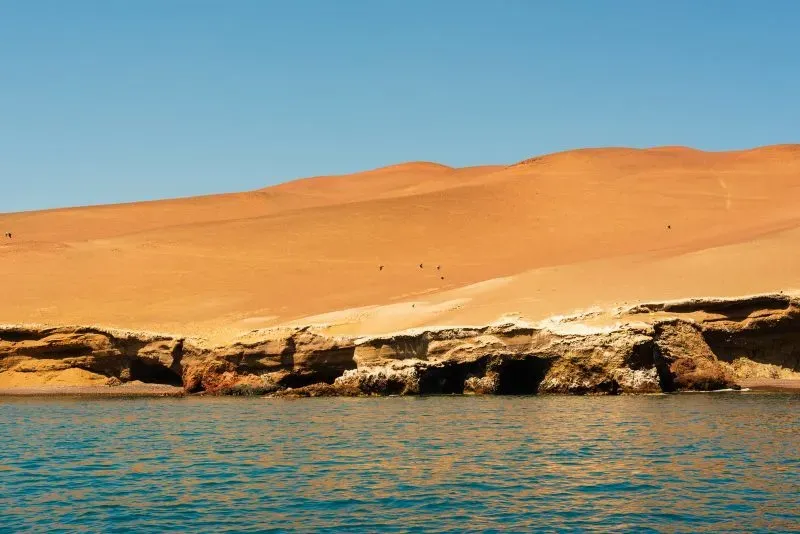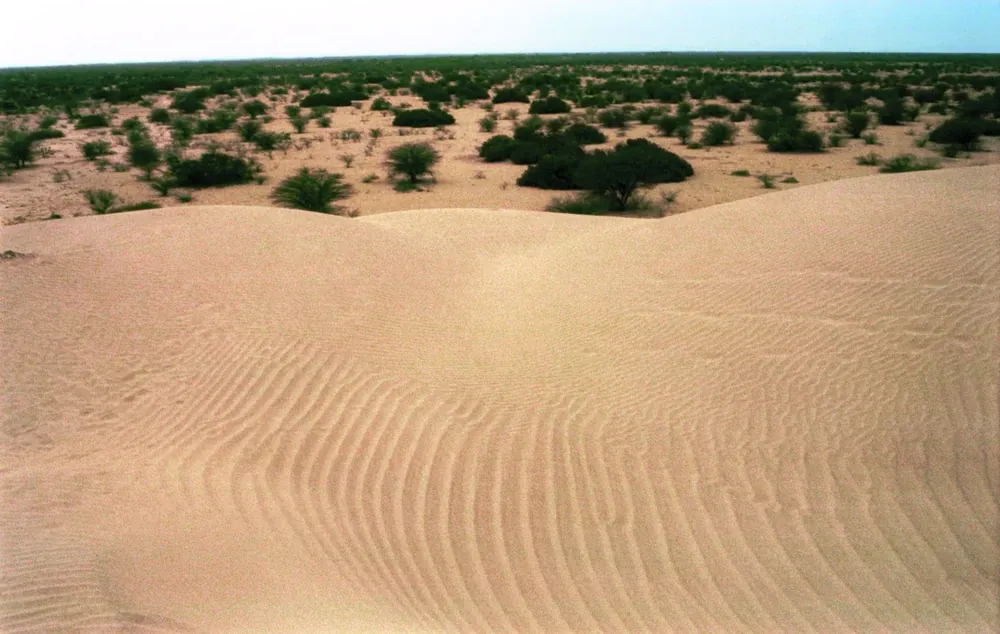The Sechura Desert, also known as the Peruvian Desert or the Peru-Chile Desert, is an extended desert extending northward from the Atacama Desert along the northwestern South American coast. Most of the desert is located on the west coast of Peru, with small parts in Chile near the Atacama Desert.
 |
| Sechura Desert |
The desert occupies a strip on the north Pacific coast of Peru south of the Piura region, extending from the coast 20-100 km inland to the secondary Andes mountain ranges. At its northern end near the city of Piura, Sechura makes the transition to the Tumbes-Piura tropical dry forest ecoregion (an area that also covers eastern Lambayeque), consisting of equatorial dry forests. The total area of the Sechura Desert is 188,735 sq. km.
 |
| Sechura Desert |
Although some sources limit the Sechura Desert to the northwesternmost part of Peru, others (including the World Wildlife Fund) define it as an entire stretch of coastal desert from the northwestern point of Peru to northern Chile, delimiting it as the Atacama Desert. Because of this, and the fact that the strip of desert between the Atacama and the northwestern coast of Peru would otherwise have been unnamed, the entire arid region of the coast of Peru has come to be referred to as the Sechuru Desert.
The name Sechura comes from a culture that developed and was called Sech in 400 BC. In 1728, the old city of Sechura was destroyed by a tsunami and was moved to its current location. During the El Nino period, floods were quite common in this region. In 1998, torrents of water poured into the coastal desert of Sechura. Where there was only arid, heavy soil for 15 years, suddenly and surprisingly, the second largest lake in Peru appeared: 90 miles (145 kilometers) long, 20 miles (30 kilometers) wide, and ten feet (three meters) deep, random scorched mounds of sand and clay eerily located near the surface.
 |
| Sechura Desert |
Geography and Climate
The Peruvian Desert has a very low-temperature range due to the diminished influence of the nearby Pacific Ocean, but due to the sharply increased influence of cold coastal waters and subtropical atmospheric depression, the desert is one of the driest on Earth. This should come as no surprise given its proximity to the driest place in the world, the Atacama Desert.
Summers (December to March) are warm and sunny with average temperatures of over 24°C. In summer they reach 25 to 38 degrees. Winter (June to September) is cool and cloudy with temperatures ranging from 16 degrees during the night to 24C during the day.
The numerous short rivers that cross the Sechura have supported human settlements for thousands of years. Many urban cultures flourished here, including the Moche. Moche thrived on fish, guinea pigs, crushes, and peanuts. The Xikang culture (800-1300) followed the Moche and was known for its gold jewelry. The rivers still support heavily irrigated agriculture in their fertile valleys. Two of Peru's five largest cities, including Puira and Chiclayo, lie within the region.
